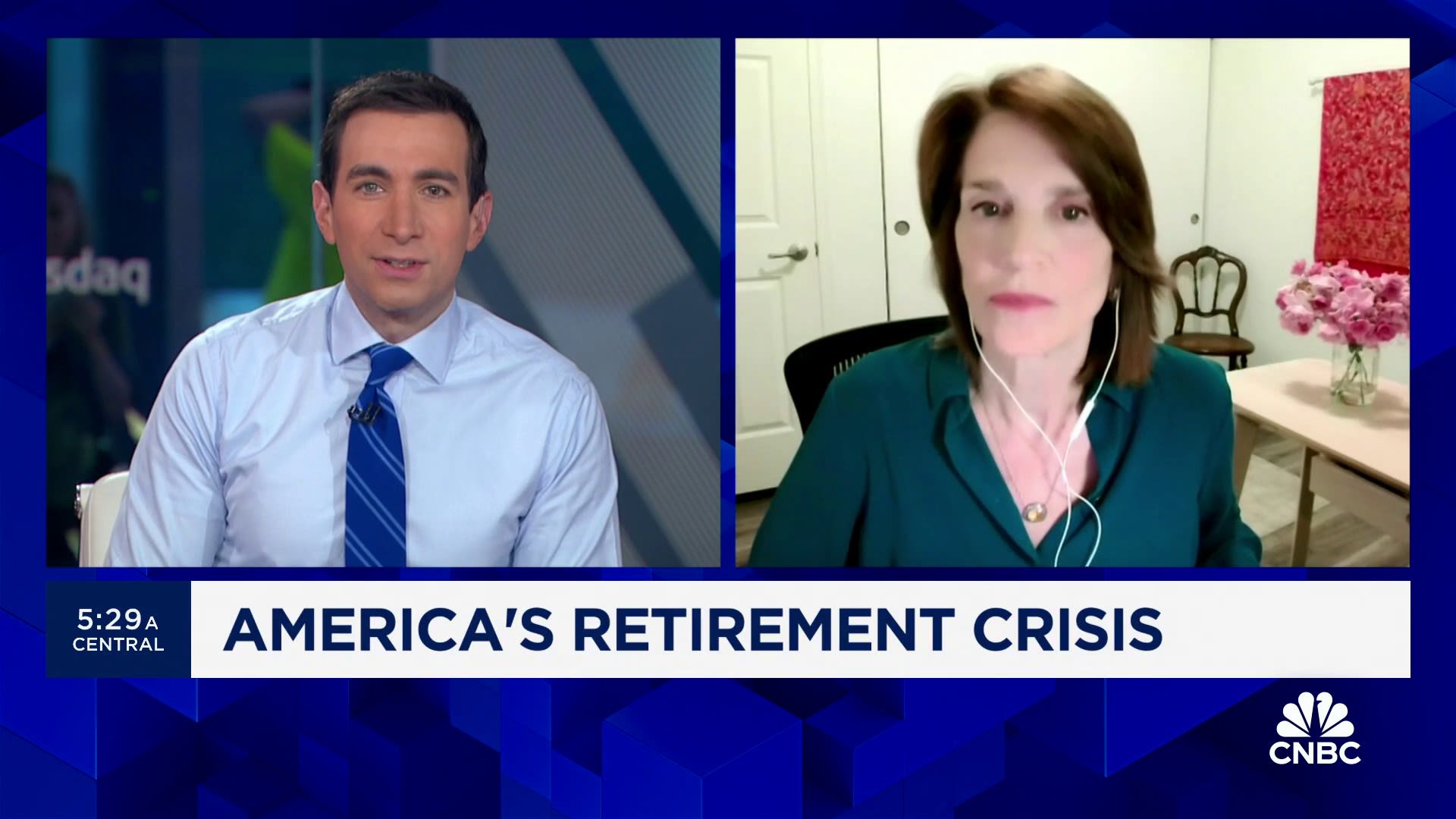Ascentxmedia | Istock | Getty Images
Savings shortfall worsens financial insecurity
Many respondents to Prudential’s survey say they worry they will outlive their savings. That includes 67% of 55-year-olds; 59% of 65-year-olds and 52% of 75-year-olds.
The age 55 cohort is the “most financially insecure” about their retirement readiness, Caroline Feeney, CEO of Prudential’s U.S. business, said during a Thursday presentation of the survey results.

That comes as 55-year-olds face a deep savings shortfall, with a $47,950 median savings toward retirement versus the $446,565 recommended balance, based on eight times the average U.S. salary, according to Prudential.
“This is the first group that is entering retirement, [with] largely no pensions,” Feeney said. “And then add on top of the feeling of additional financial insecurity because they’re not quite sure if Social Security will be there to fully support them.”
Lower Social Security COLA forecast for 2025
Unlike most other sources of retirement income, Social Security benefits are automatically adjusted for inflation each year.
As current retirees continue to feel the pinch of higher costs, slowing inflation points to a lower Social Security cost-of-living adjustment next year.
The Social Security cost-of-living adjustment may be 3% in 2025, estimates Mary Johnson, an independent Social Security and Medicare analyst.
Beneficiaries saw a 3.2% Social Security cost-of-living adjustment this year — resulting in an average retirement benefit increase of just over $50 per month. That followed record Social Security cost-of-living adjustments of 8.7% in 2023 and 5.9% in 2022.
Social Security’s annual adjustments are based on a certain measure of inflation — the consumer price index for urban wage earners and clerical Workers, or CPI-W.
The latest reading for May shows the CPI-W is up 3.3% from a year ago.
Yet certain categories — including food and services — are still seeing elevated rates of inflation.
While the CPI-W is used to calculate Social Security’s COLA each year, some argue it may not be the best measure to accurately gauge retirees’ costs.
For example, while the CPI-W assumes older adults spend about two-thirds of their income on housing, food and medical costs, those items actually make up about three-quarters of their budgets, according to Johnson.
“This disparity suggests that my COLA estimate, which is based on the CPI-W, may be undercounting real senior inflation by more than 10%,” Johnson said.
Another estimate from The Senior Citizens League points to an even lower COLA for 2025: almost 2.6% based on the latest inflation data.
The discrepancy between the COLA estimates is due to different methods used to come up with the calculations.
If inflation continues to subside, Johnson said her COLA estimate may fall even lower.

